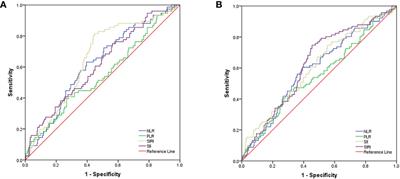| Message: Chloronychia: The Goldman-Fox Syndrome - Implications for Patients and Healthcare Workers
Robert A Schwartz 1, Nicole Reynoso-Vasquez 1, Rajendra Kapila 1
Affiliations collapse
Affiliation
1Department of Dermatology, Infectious Diseases, and Pathology, Rutgers New Jersey Medical School, Newark, New Jersey.
PMID: 32029931 PMCID: PMC6986112 DOI: 10.4103/ijd.IJD_277_19
Free PMC article
Abstract
Nail coloration has many causes and may reflect systemic disease. White nails (leukonychia) are common; rubronychia is rare, whereas green (chloronychia) is occasionally evident. Chloronychia, the Fox-Goldman syndrome, is caused by infection of an often damaged nail plate by Pseudomonas aeruginosa. P. aeruginosa is an opportunistic pathogen known for localized and systemic infections. It can spread cryptically in a variety of ways, whether from an infected nail to a wound either autologously or to a patient as a surgical site infection, and many represent a threat to elderly, neonatal, or immunocompromised patients who are at increased risk of disseminated pseudomonas infection. We will review the Goldman-Fox syndrome as an occupational disorder of homemakers, nurses, plumbers, and others often with wet hands. At a time when hand washing is being stressed, especially in healthcare settings, examination of nails should be emphasized too, recalling the possibility of surgical site infe ction even with a properly washed and gloved medical care provider. Pseudomonas may be a community-acquired infection or a hospital or medical care setting-acquired one, a difference with therapeutic implications. Since healthcare workers represent a threat of nosocomial infections, possible guidelines are suggested.
Keywords: Chloronychia; chromonychia; green; nails; pseudomonas.
Copyright: © 2020 Indian Journal of Dermatology.
Conflict of interest statement
There are no conflicts of interest.
Figures
Figure 1
Figure 1 Green nail in otherwise health…
Similar articles
Chloronychia: green nail syndrome caused by Pseudomonas aeruginosa in elderly persons.
Chiriac A, Brzezinski P, Foia L, Marincu I.
Clin Interv Aging. 2015 Jan 14;10:265-7. doi: 10.2147/CIA.S75525. eCollection 2015.
PMID: 25609938 Free PMC article.
The Goldman-Fox Syndrome: Treating and Preventing Green Pseudomonas Nails in the Era of COVID-19.
Schwartz RA, Kapila R.
Dermatol Ther. 2020 Dec 3:e14624. doi: 10.1111/dth.14624. Online ahead of print.
PMID: 33274584 No abstract available.
[Green nail syndrome or chloronychia].
Maes M, Richert B, de la Brassinne M.
Rev Med Liege. 2002 Apr;57(4):233-5.
PMID: 12073797 Review. French.
Retrospective Case Series on Risk Factors, Diagnosis and Treatment of Pseudomonas aeruginosa Nail Infections.
Geizhals S, Lipner SR.
Am J Clin Dermatol. 2020 Apr;21(2):297-302. doi: 10.1007/s40257-019-00476-0.
PMID: 31595433
[Pseudomonas aeruginosa in dermatology].
Morand A, Morand JJ.
Ann Dermatol Venereol. 2017 Nov;144(11):666-675. doi: 10.1016/j.annder.2017.06.015. Epub 2017 Aug 2.
PMID: 28778416 Review. French.
See all similar articles
References
Witkowski AM, Jasterzbski TJ, Schwartz RA. Terry's nails: A sign of systemic disease. Indian J Dermatol. 2017;62:309–11. - PMC - PubMed
Almohssen AA, Schwartz RA. Rubronychia: A rose by any other name. J Eur Acad Dermatol Venereol. 2019;33:e103–4. - PubMed
Schwartz RA, Barnett CR. Muehrcke Lines of the Fingernails Medscape Reference Updated May 23, 2019. [Last accessed on 2019 Aug 19]. Available from: http://emedicinemedscapecom/article/1106423-overview" rel="noopener nofollow noopener" title="External link: http://emedicinemedscapecom/article/1106423-overview">http://emedicinemedscapecom/article/1106423-overview .
Goldman L, Fox H. Greenish pigmentation of the nail plates from bacillus pyocyaneus infection. AMA Arch Dermatol Syphilol. 1944;68:136–7.
McNeil SA, Nordstrom-Lerner L, Malani PN, Zervos M, Kauffman CA. Outbreak of sternal surgical site infections due to Pseudomonas aeruginosa traced to a scrub nurse with onychomycosis. Clin Infect Dis. 2001;33:317–23. - PubMed
Show all 23 references
Publication types
Review
Related information
MedGen
LinkOut - more resources
Full Text Sources
Europe PubMed Central
Medknow Publications and Media Pvt Ltd
PubMed Central |




